If you have overlapping call numbers in Maps, Alexandria will display a duplicate title or a duplicate copy. If the copies can be modified but were not intentionally added, this may be from an import running too many times and adding a new copy each time. You can solve this issue by separating your Maps so they do not have overlapping call numbers. (This will also ensure the correct map displays in Researcher.)
Maps

Maps help patrons locate items in your library.
To access it directly, add /maps to the end of your Alexandria URL.
Maps Management allows you to construct simple guides that help patrons locate resources in your library.
Each map is associated with a call number range and can include written directions (the description), notes, and illustrative floorplans of your library.
When a map corresponds with a particular call number range (e.g. 800 to 899), a Show Map link or icon is available in your Researcher results, and from Circulation. The link/icon opens up the Description and/or Image associated with the item.
In a Centralized Catalog, maps are specific to a particular collection; each site will require its own maps.
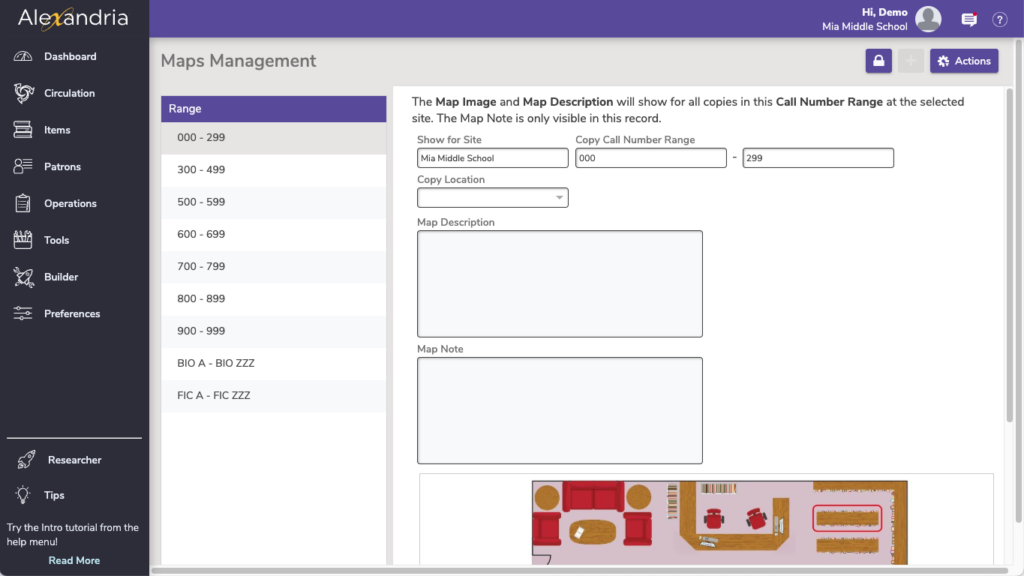
The Maps Management window consists of two distinct areas:
- Record list. The left-hand side of the Maps Management is a list containing the names of your current user-created maps. Selecting (highlighting) a map from this list will display the contents of the record in the right-hand side of the window.
- Maps pane. The larger, right-hand portion of the Maps Management window consists of the Map pane where the contents of the selected map record are displayed—in full—allowing you to modify their information or remove them completely.
Click the Lock icon to unlock a selected map, add a map, or use the Actions Menu.
Click the plus sign to Add Map. This creates a new, blank map.
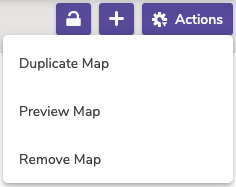
Actions Menu
- Duplicate Map. Make a copy of the selected map.
- Preview Map. View what the map looks like in Researcher (how patrons see it).
- Remove Map. Remove the selected map. You can’t restore deleted maps, so be careful!
Maps Pane
Maps are required to have either an image and/or description. If you don’t have the time or tools to make images, simply include simple text instructions for your patrons.
- Call Number Range. Enter the call number range that you would like associated with this map.
- Copy Location. Tie your map to a copy location.
- Map Description (shown with map image). Add additional text with rules or hints on locating items.
- Map Note. Use this for private notes for operators/librarians; Notes won’t be visible to patrons. For example, you can leave a note describing the appropriate usage for the map, or how to find the original image in order to modify and re-upload it.
- Map Image. You can have one image per map. Any image larger than 480 pixels high will be proportionally scaled to fit our specifications (e.g. an 800 x 600 pixel image would be resized to 640 x 480). When creating a map for your library, consider a graphic or photograph of your library layout with this specific section highlighted in a thick colorful line.
Making Maps for your library
Use a Paint or Draw program, such as Microsoft Paint or Google Drawings; https://drive.google.com > New > Google Drawings, a word processing or presentation program such as Microsoft Word or Powerpoint, or Apple Pages or Keynote; floorplanner.com or a web service like Floor Planner, which lets you create free floor plans using hundreds of graphics.
First create a basic map of your library, or section of your library, and save that image in a .jpeg, .jpg, .gif, .tiff, .svg, or .png format.
 | You can create quick maps in tools like Google Draw or https://floorplanner.com/. You can start with these graphics of shelves and tables: Maps assets pngs.zip. |
View Maps
Map descriptions and/or images are accessible from Researcher or Scout search details when an item falls within a corresponding call number range. Additional information, such as written directions, can be provided in the Map Description field and appear with the map image. Notes are for operator use only and will not be visible to patrons.
Circulation
In Circulation, go to the Actions menu for the current item and select Show Map. Use the drop-down menu at the top to see which site the map is for and switch to the map for a different site.
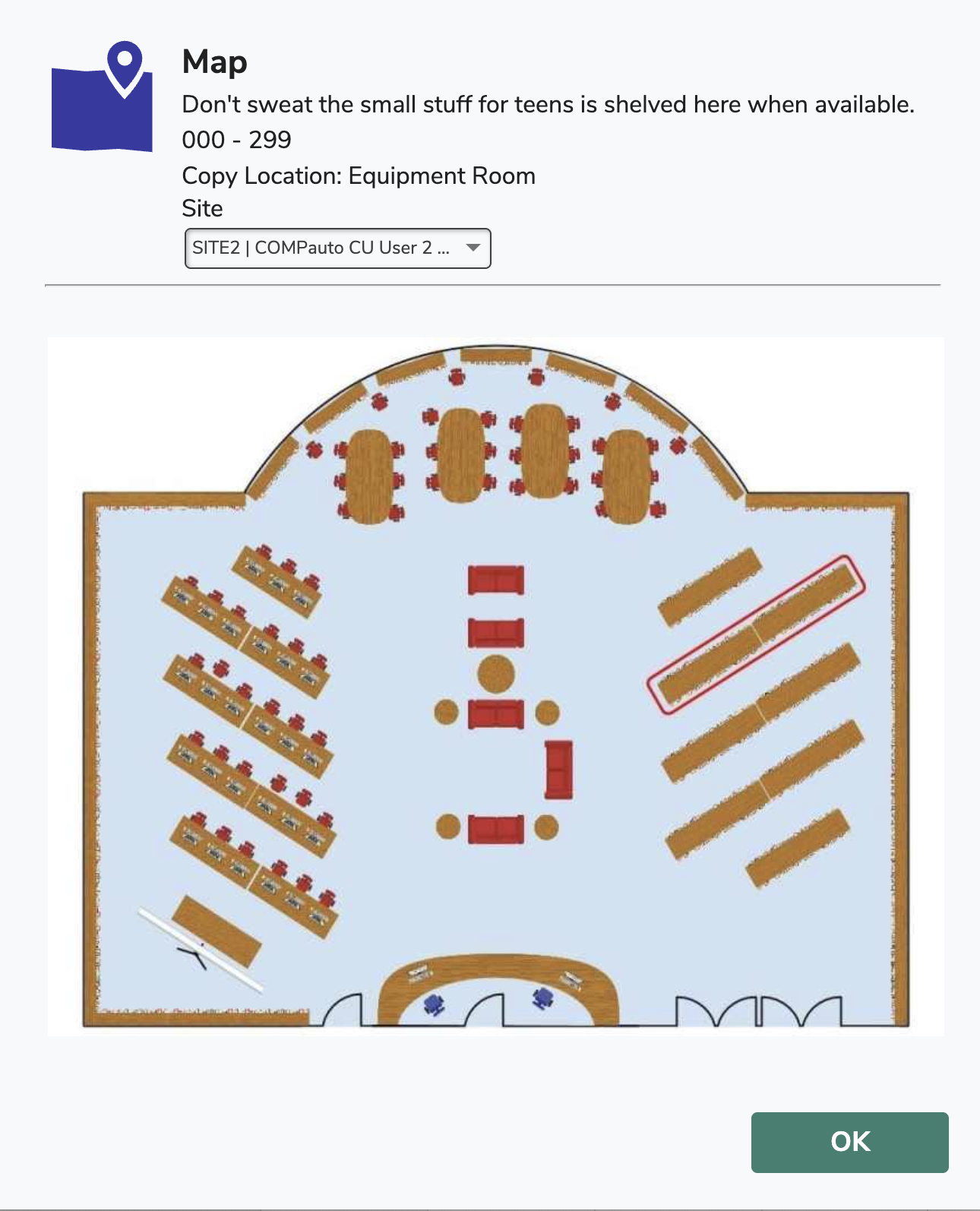
Researcher
Go to Researcher and search for an item. If a map is available for your copy’s call number range, a Show Map icon will appear in the search details control bar and the Copies tab.
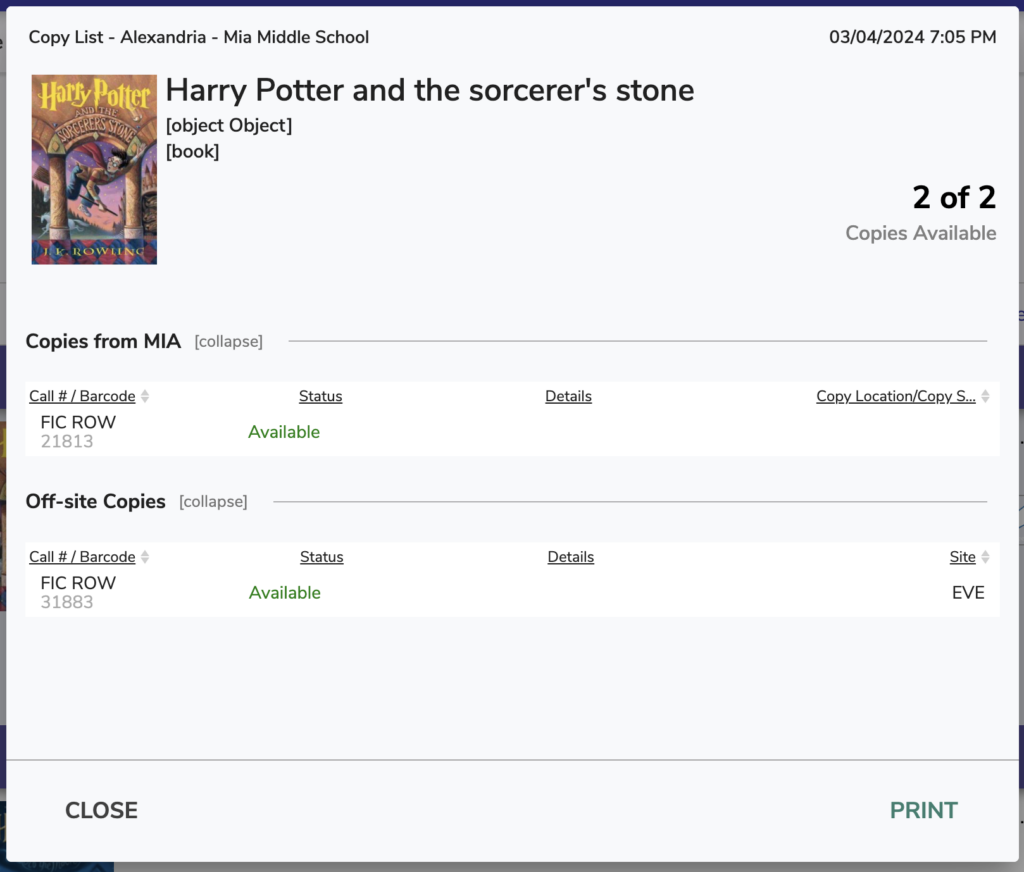
Here is an example of the window that appears when you click the map icon.
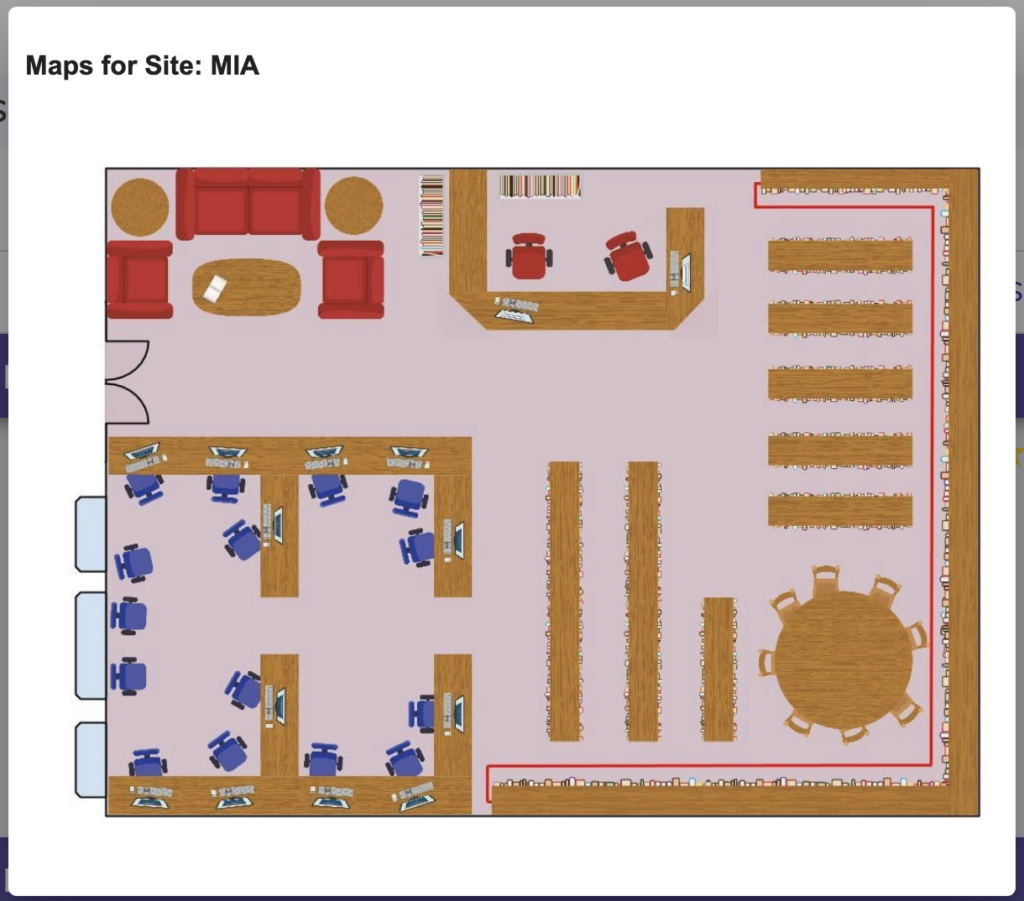
Scout
If a map is available for your copy’s call number range, a Map icon appears at the bottom of Scout’s Item Details.



